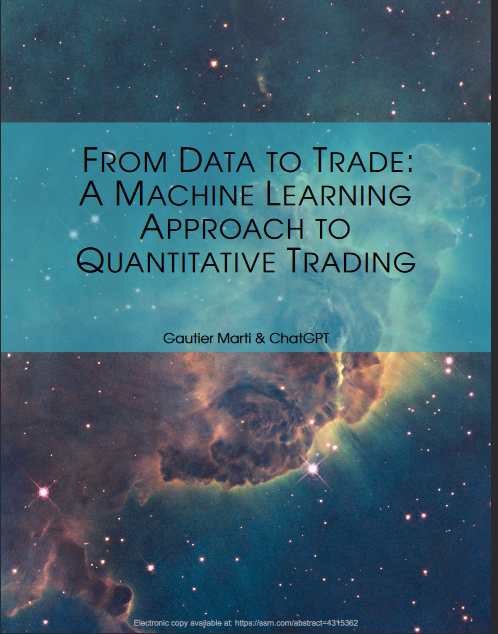دانلود کتاب From Data to Trade: A Machine Learning Approach to Quantitative Trading - Original PDF
Author:
Gautier Marti
0 (0)
توضیحات کتاب :
Machine Learning has revolutionized the field of quantitative trading, enabling traders to develop and implement sophisticated trading strategies that leverage large amounts of data and advanced modeling techniques. In this book, we provide a comprehensive overview of Machine Learning for quantitative trading, covering the fundamental concepts, techniques, and applications of Machine Learning in the financial industry. We start by introducing the key concepts and challenges of Machine Learning for quantitative trading, including feature engineering, model selection, and backtesting. We then delve into the various Machine Learning approaches that are commonly used in quantitative trading, including supervised learning, unsupervised learning, and reinforcement learning. We also discuss the challenges and best practices of implementing Machine Learning models in the live market, including the role of data quality, the importance of risk management, and the need for ongoing model monitoring and validation. Throughout the book, we provide numerous examples and case studies to illustrate the concepts and techniques discussed, and we also include practical tips and resources to help traders and practitioners get started with Machine Learning for quantitative trading. This book is an essential resource for anyone looking to gain a deeper understanding of how Machine Learning is transforming the world of finance. This groundbreaking work offers a unique perspective on the use of Machine Learning in the financial markets, as it was created by an advanced Artificial Intelligence (AI) using its own Machine Learning algorithms to analyze vast amounts of data and construct a comprehensive guide on the subject. Machine Learning is a type of artificial intelligence that enables computers to learn and adapt without being explicitly programmed. It involves the use of algorithms and statistical models to analyze data and make predictions or decisions based on the patterns and trends that it identifies. In Machine Learning, a computer is trained to recognize patterns in data by being presented with a large number of examples of the patterns that it should recognize. As the computer processes these examples, it "learns" the characteristics of the patterns and becomes better at recognizing them. Once the computer has learned to recognize the patterns, it can then be used to make predictions or decisions based on new data that it has not seen before. There are many different types of machine learning, including supervised learning, unsupervised learning, semi-supervised learning, and reinforcement learning. Each type of Machine Learning involves a different approach to training the computer and making predictions or decisions based on the data. Machine Learning is used in a wide range of applications, including image and speech recognition, natural language processing (NLP), recommendation systems, and fraud detection. It has the potential to transform many different industries by automating tasks that would be difficult or impossible for humans to perform, and by enabling computers to make decisions and predictions based on data in a way that is more accurate and efficient than human judgment. In “From Data to Trade: A Quantitative Approach to Machine Learning,” readers will learn about the latest techniques and approaches for using Machine Learning in quantitative trading, as well as practical advice for implementing these methods in their own trading strategies. From basic concepts to advanced techniques, this book covers it all and is an invaluable resource for traders at any level of experience.
سرچ در وردکت | سرچ در گودریدز | سرچ در اب بوکز | سرچ در آمازون | سرچ در گوگل بوک
1,119 بازدید 1 خرید










